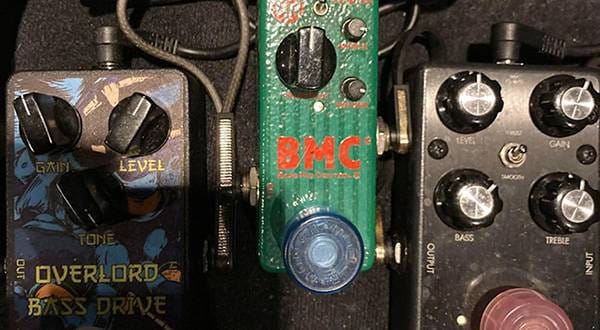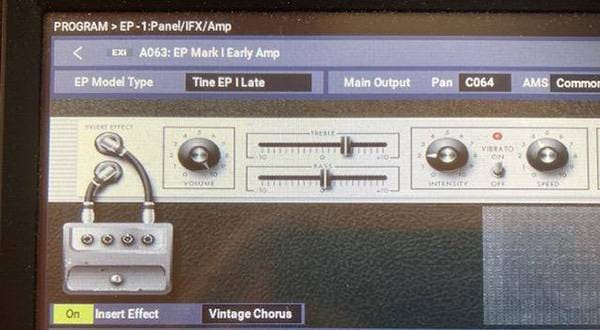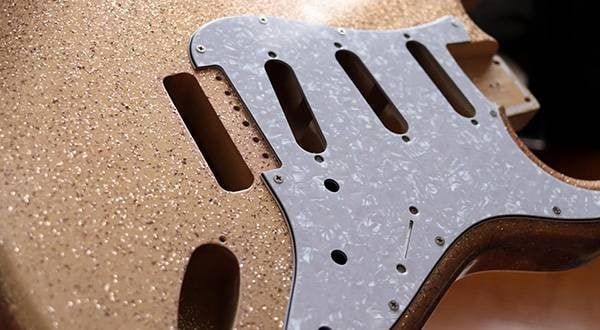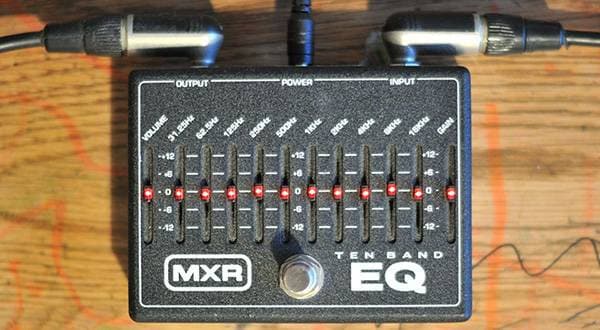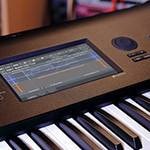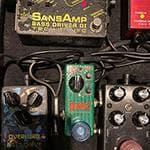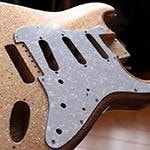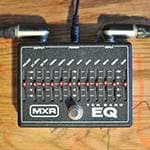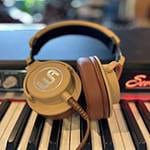This time I'm going to talk about the sound and settings at live performances.
Music venues are in a difficult situation due to the Corona virus. Unfortunately, it seems that many have been abandoning the business. Moreover, even karaoke bars have become "cluster sites" and sometimes I worry about the future of the Japanese music culture, but it might be a needless anxiety considering the power of music. I suppose many have already set up an environment for live streaming. However, I think streaming in Japan has a limit. After all, it's dependent on your housing situation. If you sing aloud like overseas musicians, you'll have neighbors banging on your wall (I did. Lol. Well, I was running my Hiwatt at full volume, so it was my fault). I think live streaming is one expression method, but it's not a live concert. It’s just a streaming. We can enjoy the sound from a smartphone or PC speakers, but I'm disappointed a bit. During this period, I came to the conclusion that live concerts and live streaming are similar but different. At the same time, that's why live concerts will never go extinct.
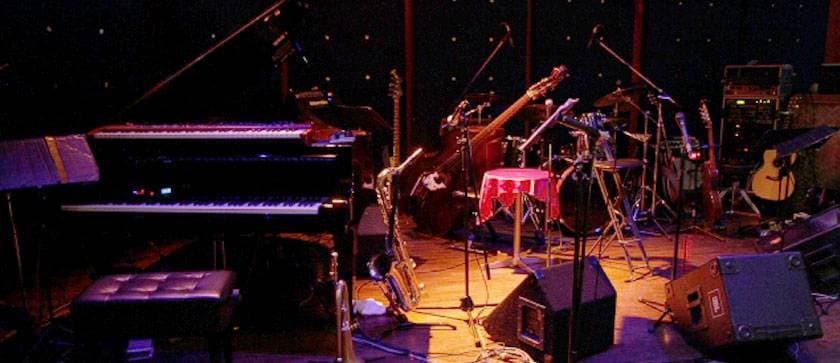
By the way, maybe in the last 10 years (or more?), if you look at the PA equipment at music venues around Tokyo with a capacity of about 100 people, subwoofers are usually installed. They make the sound decent at any venue. In the past, bad drummers sounded really sloppy, but now, the bass drum sounds as if it's beating in your stomach, unless it's extremely weak. That alone is worth paying money for. It's mostly due to subwoofers. But the subwoofer, which makes everyone sound like a good player, is laughing at musicians with an angelic devil's smile.
I guess there are only few players who are aware of subwoofers during live performances. They are especially related to bass and drums, and also guitars and synths depending on the tone. Of course, many players care about the sound that is output, and those who are used to it also care about the midrange (monitoring on stage) and the bass feel. However, in the end, both professionals and amateurs are often trapped by the subwoofer devil's smile. There might be nothing the player can do, but it can be avoided if you know how the subwoofer works.
A subwoofer is a speaker that specializes in reproducing only the ultra-low frequencies below 100Hz. Isn't it generally recognized that the subwoofer was intended for 5.1ch of home theater rather than for music? About 50% of the reasons why amateurs are impressed by the sound of home theater systems at electronics stores is the bass sound of the subwoofer. It's a case where the listener feels the vibration of the sound that is not usually felt, and feels this is a good sound.
However, actually, there are not so many movie scenes where subwoofers are needed. They're used in action scenes, explosion scenes, and scenes with intense music, but they're not always in use. When I get the audio from an overseas movie and paste it on Pro Tools, the WAVE data of the subwoofer channel may be a bar (silence) for a whole quiet roll (a snippet about 15 minutes in length). In the first place, the dialogue data is mostly sent in 5.0ch, and the dubbed dialogue data is also delivered in 5.0ch in most cases.
At a movie theater, you might think it's good that the actor's low tone voice is effective, but it's the production intentionally doing it with the EQ on actor's voice (sometimes on the villain's) or the bass that naturally comes out when the volume is turned up. I think that the bass from a TV and home theater system is emphasized by EQ in the post-edit. In the movie, the subwoofer is used when the audience is expected to feel the highlights, power, and some variation. In the rest of the scenes, they try to avoid it as much as possible because, from the aspect of production, if the subwoofer is kept on, it's not effective in the scenes that should be acoustically highlighted. Sound effects and music ought to be used like a secret technique. And from the engineer's point of view, the mega volume bass tends to interfere with the sounds that should be heard, and if you listen to the bass at about 100Hz at a roaring sound of around 85dB, you will feel it. Once when I was setting a movie speakers (for Dolby) before dubbing a movie, one guy told me not to listen to the subwoofer for a long time because it shakes your brain. It's certainly doesn't feel good. It's common to lower the volume of a music subwoofer channel with clip gain. The trailer volume should be below 85 Leq, so we judge to go with the music subwoofer suppressed in the first half. In the production of kids' movies, the sound engineer is careful of this, too. If you feel vibrations in your knees all the time in the music venue, the subwoofer is too loud and too much.
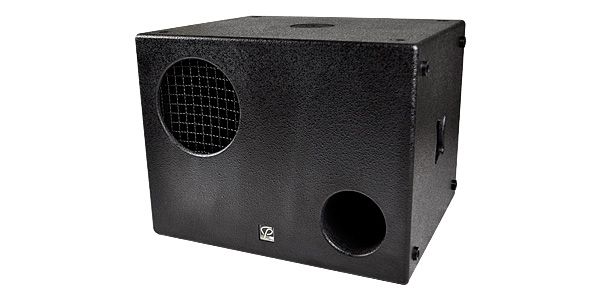
I got off track from music to movies a bit, but the principle is the same. However, in music (PA), subwoofers are used differently.
Basically, the music is sent to the subwoofer, and the volume is as it is. We generally don't move the faders once they've been set. Some fine adjustments may be done, but the rest is up to the player. I don't move the faders frequently outside of a range of about 10dB. It's like expressing yourself well at this level. Certainly, if you raise the volume of a whisper like Koji Tamaki's to a level like a dubbing mixer, the artist will get angry. As for music, the power balance with the engineer is overwhelmingly on the side of the sound producer. It's a cultural difference. Therefore, even if you create a poor sound, that sound will still be respected.
However, there are some negative effects in live performances.
Here, let's roughly review the flow of sound to the PA subwoofer.
- Pick up the sound with a microphone. For instruments such as keyboards, receive the sounds via line and direct box, and collect all the sounds in the PA mixer.
- Send the sound from the mixer to the channel divider. (Some models distribute directly with an amp, but usually a channel divider is used)
- Use the channel divider to decide from which frequency to cross over and send to Hi, Mid, SW (3-way) speakers. (Some models do not allow detailed crossover settings.)
- The sound is sent to each power amp from the channel divider, and it's emitted from the speakers.
I omitted small effectors, but it's generally like this.
So unless the mixer operates the faders (or EQ), the bass is always being sent from the mixer to the channel divider at the crossover frequency. In other words, the ballad's verse continues to produce loud bass if nothing is changed, with the settings of the powerful deep bass sound of the intro.
The biggest problem with this is the masking effect of super bass. The masking effect is an effect that masks or cancels high-frequency sounds adjacent to the loud low-frequencies. For example, next to 100Hz, about 200Hz is around the bass range of a male baritone. When there's a loud bass at 100Hz, the 200Hz sound gets drowned out.
To be honest, it's hard to hear the mid-low range of the vocals with the acoustics of recent music venues. The part where the treble are raised such as chorus stands out, but where it's pulled back such as for a verse, it doesn't stand out, or is barely heard. We often can't hear the low backing guitar. It's a serious situation that if you can't hear the vocals in a song and the beauty of the vocals can't be conveyed.
Therefore, vocals that are most compatible with such an environment now have a special singing style that pierces through the head, the type that squeezes the voice for treble, and singers with a peculiar voice type of voice that originally has a peak at 1k or more. For guitar, it should be the type that you play around the 10th fret of the treble strings rather than the riffs played with bass strings like crawling on the ground. I think the people who play popular music are those who have adapted to the present trends. If people with natural singing styles like Karen Carpenter, Carole King, and James Taylor made their debut now, they may not become popular. This has something to do with the difference between digital and analog, and I'd like to talk about it again someday.
So what should we do?
I think the best thing is for the PA mixer to adjust the sound output while being aware of the feeding the subwoofer. However, if it's a venue you only play like once a month where most musicians are chance comers, it's not practical to send them the setlist in advance so they can learn the composition of the songs, in addition to requesting to reduce the bass here and add more bass there. I believe the subwoofer settings (crossover value, volume of each amp) are the venue's sound, and the subwoofer is expensive in the PA system, so I know you want to use it. If it's an important show, sending the setlist and a gratuity to the mixing engineer might help, and may be worth it.
After all, controlling your own sound is the quickest way to lead to the evolution of your abilities.
For example, guitarists have used the volume knob and pedal to adjust the dynamics range on their own. It's about making it more bass-sensitive and practicing by assuming how much bass you'll get with subwoofer at the show. You might've heard that "the bass spreads out" but anyway, the low range smiles like a devil. The masking effect I mentioned earlier also makes the monitoring environment on the stage extremely bad, and when you say that the sound is bad, about 88% of the time it's because of this bass or forgetting to raise the level of something. Also, low frequencies tend to cause phase problems, and especially in small venues, it can cause acoustic chaos. If the bass uses a direct box or Line 6/Helix, I secretly think that big bass amp in the back is useless. I think it's not a good idea to ruin the band monitoring for self-satisfaction.

So, first of all, let's think about where to put out the most bass in the performance. Then reduce the bass towards that point. Especially for bands, I think the bass will be in charge of this work. For example, a section that is pulled back such as a verse, and the section that lets you listen to vocals may not need frequencies below 100Hz. I think it's difficult to control the volume of the bass drum, so I'd leave the range output by the subwoofer to the bass drum. It's impossible to make a difference in sound quality at the ultra-low range, so when you hear it live, you may not be able to feel the difference between whether it's the sound of bass drum or bass guitar.
The beauty of the sound quality of the bass is in the attack sound above 100Hz. And the most important thing is to match the bass drum and bass guitar firmly in a band play. As I mentioned earlier, there is no difference in sound quality between drums and bass guitar at the ultra-low range. In other words, if the bass drum and the bass guitar are out of alignment, it's the same as hitting the bass drum twice. When it happens in a song with repeated hit with a twin-pedal like heavy metal, you'll hear a saturation of frequencies that you cannot bear. Sometimes I didn't know what the bass was playing because it was so out of alignment, and I even complained to the bassist who I knew well. Perhaps it feels good to be so saturated at first because it makes you feel like you're playing well and comfortably, but if you're aiming a little higher, you should experience a harmonious bass sound feel. It should be incomparably comfortable. Ideally, the bass drum attack sound and the bass guitar attack sound should be synchronized.
In other words, the frequency should not be rough like dividing into parts, but should be done exactly.
This way, the bass player will be in a more important position in the band than ever before. In the past, there was an image that a bassist was a sober craftsman, but from now on, I want them to actively play the role of a conductor of frequencies.
That's the tip to get along with the subwoofer with the angelic devil's smile.
This has gotten long, so that's all for this article.
I hope we can show off our abilities in upgraded live performances and that the day will come soon.
Thank you for reading.
These are my opinions only.
Taiyo Haze







